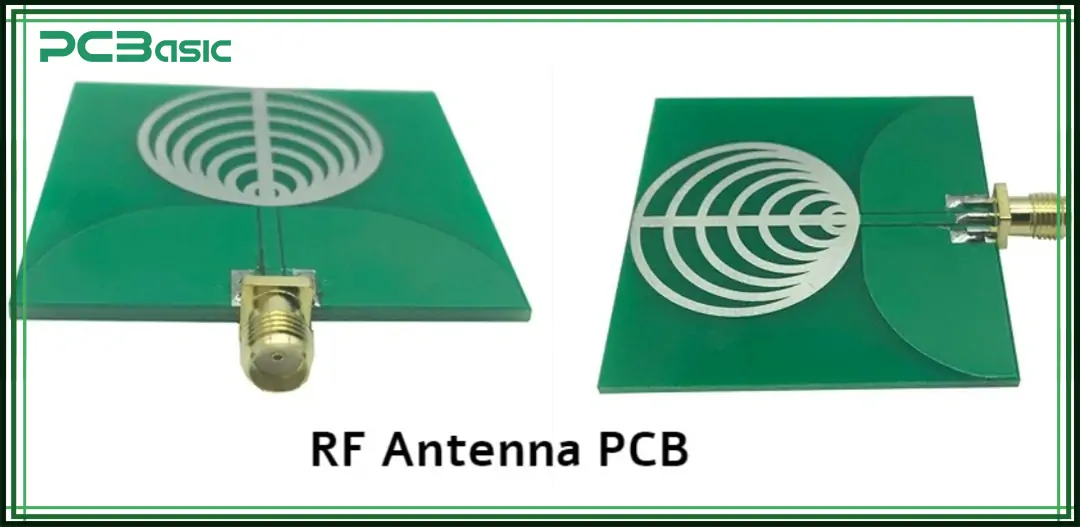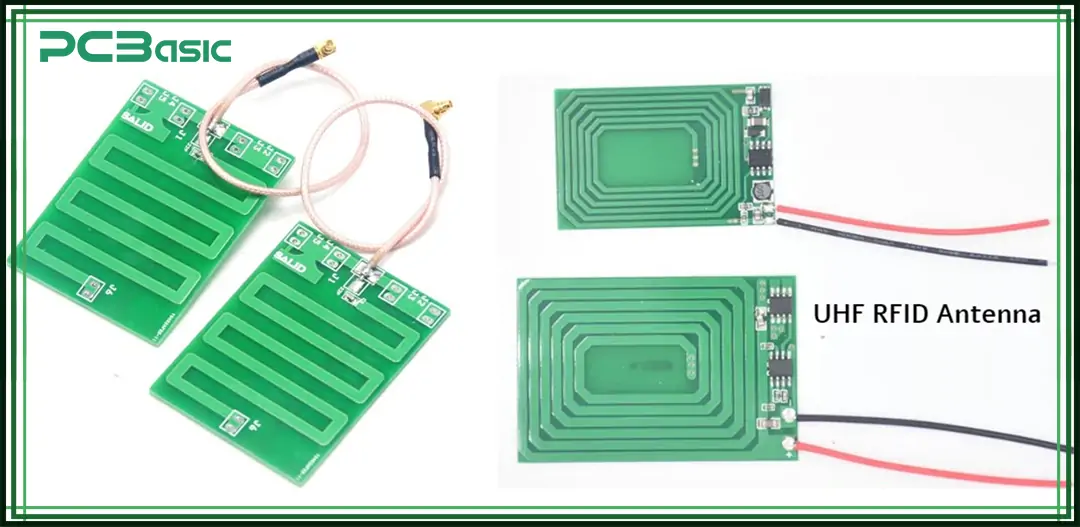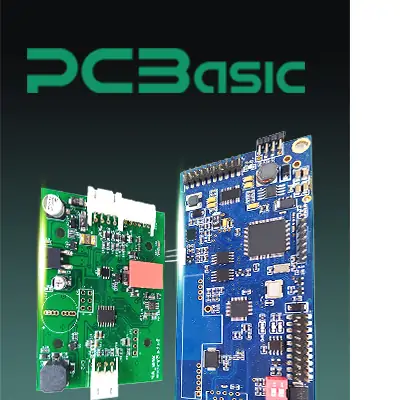

Global high-mix volume high-speed PCBA manufacturer
9:00 -18:00, Mon. - Fri. (GMT+8)
9:00 -12:00, Sat. (GMT+8)
(Except Chinese public holidays)


Global high-mix volume high-speed PCBA manufacturer
9:00 -18:00, Mon. - Fri. (GMT+8)
9:00 -12:00, Sat. (GMT+8)
(Except Chinese public holidays)
HomePage > Blog > Knowledge Base > RF Antennas: Types, Functions, and How They Work
In the era when wireless technology prevails today, antennas are almost everywhere. Whether it is mobile phones, Wi-Fi routers, satellites, or broadcasting towers, the existence of RF antennas is indispensable in them. Its function is very simple: it is used to send and receive wireless signals, enabling smooth communication among various devices.
So, what exactly is an RF antenna? How does it work? And why can't wireless communication work without it?
In this article, I’ll first tell you what an RF antenna is, and then explain in a simple way how antennas work. Finally, we will also take a look at the common RF antenna types to enable you to easily understand the basic knowledge and applications of antennas.

Definition of Antennas: An antenna is a metal structure or electronic component. It is used to convert electrical signals into wireless signals and send them out, or to receive wireless signals and convert them back into electrical signals. It is widely used in various wireless devices such as broadcasting, television, mobile phone communication and radar.
A radio frequency antenna, also known as an RF antenna, is a device that can convert electrical signals into radio waves for transmission or convert the received radio waves back into electrical signals. Simply speaking, if you want to know what an RF antenna is, it is actually a tool that enables devices to communicate with each other through "invisible signals".
Every time you make a phone call, connect to Wi-Fi, or navigate with GPS, there is actually a radio frequency antenna behind you to make it happen.
In an electronic circuit diagram, an antenna symbol is generally drawn as a radiating line or like a simple "V" -shaped structure. This symbol is used to indicate the position where the RF antenna is connected in the circuit. It can help engineers quickly figure out how the radio antenna is connected to the entire system.

You may wonder how antennas work. In fact, the principle comes from electromagnetism.
When alternating current (AC) flows through an RF antenna, it generates electromagnetic waves that spread out into the surrounding space. These waves travel until they are captured by a receiving antenna. During reception, the radio antenna picks up the incoming electromagnetic waves and induces a current, which is then processed by the receiver.
Simply put, how do RF antennas work? They convert electrical signals into wireless signals during transmission and then convert received wireless signals back into electrical signals. This two-way energy conversion is the fundamental principle behind all wireless communication.

There are many RF antenna types, which are suitable for different use cases. Here are some common radio antennas:
• Dipole Antenna: the most common and simplest type, made of two conductive elements. It’s widely used in TVs and FM radios and is the most basic form of a radio antenna.
• Monopole Antenna: made of a single conductor and usually requires a ground plane. It is commonly found in car radios and mobile devices.
• Loop Antenna: shaped like a small loop, compact in size. It’s suitable for low-frequency signals or applications that require direction finding.
• Patch/Microstrip Antenna: flat and compact, especially suitable for GPS, Wi-Fi, or mobile devices with limited space.
• Yagi-Uda Antenna: highly directional, often used for TV reception or point-to-point wireless transmission. It’s a high-gain type of RF antenna.
• Helical Antenna: a spiral-shaped antenna that produces circularly polarized signals. It’s widely used in satellite communication and aerospace applications.
When choosing the right RF antenna type, you should consider the operating frequency, signal strength (gain), physical size, and whether the antenna needs to transmit or receive signals in a specific direction.
To create a reliable and high-performing RF antenna, you need to consider multiple factors. Below are five key design elements explained in a simple and easy-to-understand way:
1. Frequency Range
Think of the antenna as a “tuner.” It can only work properly within a specific frequency range, like 2.4GHz for Wi-Fi or certain bands for 5G. If the frequency is wrong, the antenna either can’t “hear” the signal or no one can “hear” it transmitting. So, you must design the antenna to match the frequency used in the application to ensure smooth communication.
2. Impedance Matching
The antenna’s impedance must match the impedance of the device it connects to (usually a transmitter or receiver), which is typically 50 ohms. If the match is good, the signal passes through efficiently. If not, part of the signal bounces back, causing signal loss or even damaging the device. You can adjust circuits or use matching networks to fix this.
3. Polarization
Simply put, polarization refers to the direction in which the electromagnetic wave “vibrates.” Some antennas vibrate up and down (vertical polarization), some side to side (horizontal polarization), and others in a circular pattern (circular polarization). For best performance, both the transmitting and receiving antennas need to “vibrate” in the same way. If they don’t match, signals can weaken or disappear. For example, satellites often use circular polarization to handle orientation changes, while cell towers commonly use vertical polarization.
4. Gain & Directivity
Gain is how “loudly” the antenna can send or receive a signal, and directivity is the direction in which it focuses that signal. A high-gain antenna is like a megaphone—it sends signals strongly in one direction, great for long-distance links. A low-gain antenna is more like a lightbulb, spreading the signal in all directions, and it is better for short-range or wide-area coverage. The right choice depends on whether you need long-distance focus or broad coverage.
5. Size & Form Factor
Antenna size matters too. Small devices like phones, smartwatches, or IoT modules have limited space, so they need compact RF antennas like patch or embedded antennas. Bigger devices like base stations or routers can use larger, external antennas for better performance.
In short, all these design elements affect how well an antenna performs—how strong the signal is, how far it travels, and how stable the connection is. To build a truly effective RF antenna, you need to consider not only these technical factors but also the product’s structure, environment, and cost. Only then can you achieve stable and efficient wireless communication.
 About PCBasic
About PCBasic
Time is money in your projects – and PCBasic gets it. PCBasic is a PCB assembly company that delivers fast, flawless results every time. Our comprehensive PCB assembly services include expert engineering support at every step, ensuring top quality in every board. As a leading PCB assembly manufacturer, we provide a one-stop solution that streamlines your supply chain. Partner with our advanced PCB prototype factory for quick turnarounds and superior results you can trust.
RF antennas are widely used in various wireless communication systems and electronic devices. They are almost everywhere in our daily life and work. Here are some of the most common application areas:
• Telecommunications: For example, mobile internet, Wi-Fi, and Bluetooth connections—all rely on antennas wherever there are wireless signals.
• Broadcasting: Whether it's the radio we listen to or the TV programs we watch, antennas are needed to transmit and receive those signals.
• Navigation & Radar: GPS navigation, car navigation, and aircraft positioning systems all depend on antennas to provide accurate location and direction information.
• Satellite Communication: From satellite TV to space exploration, these long-distance transmissions rely on powerful antennas to send and receive signals.
• Military & Aerospace: Antennas are essential in high-demand systems such as radar, aircraft control, missile guidance, and drone communications.
• IoT & Smart Devices: Devices like smartwatches, sensors, and smart home systems use antennas to stay connected and communicate with each other wirelessly.
In short, whether you're watching videos, making phone calls, or navigating directions, there's always an RF antenna working silently behind the scenes to keep your wireless connection smooth and reliable.
An RF antenna is a fundamental component in wireless technology, enabling everything from mobile networks to global satellite systems. By understanding the definition of antennas, the symbol of antennas, how antennas work, and different RF antenna types, engineers can design better communication systems. Whether it's a simple radio antenna or a complex phased array, antennas keep the world connected.

Assembly Enquiry
Instant Quote
Phone contact

+86-755-27218592
In addition, we've prepared a Help Center. We recommend checking it before reaching out, as your question and its answer may already be clearly explained there.
Wechat Support

In addition, we've prepared a Help Center. We recommend checking it before reaching out, as your question and its answer may already be clearly explained there.
WhatsApp Support

In addition, we've prepared a Help Center. We recommend checking it before reaching out, as your question and its answer may already be clearly explained there.
